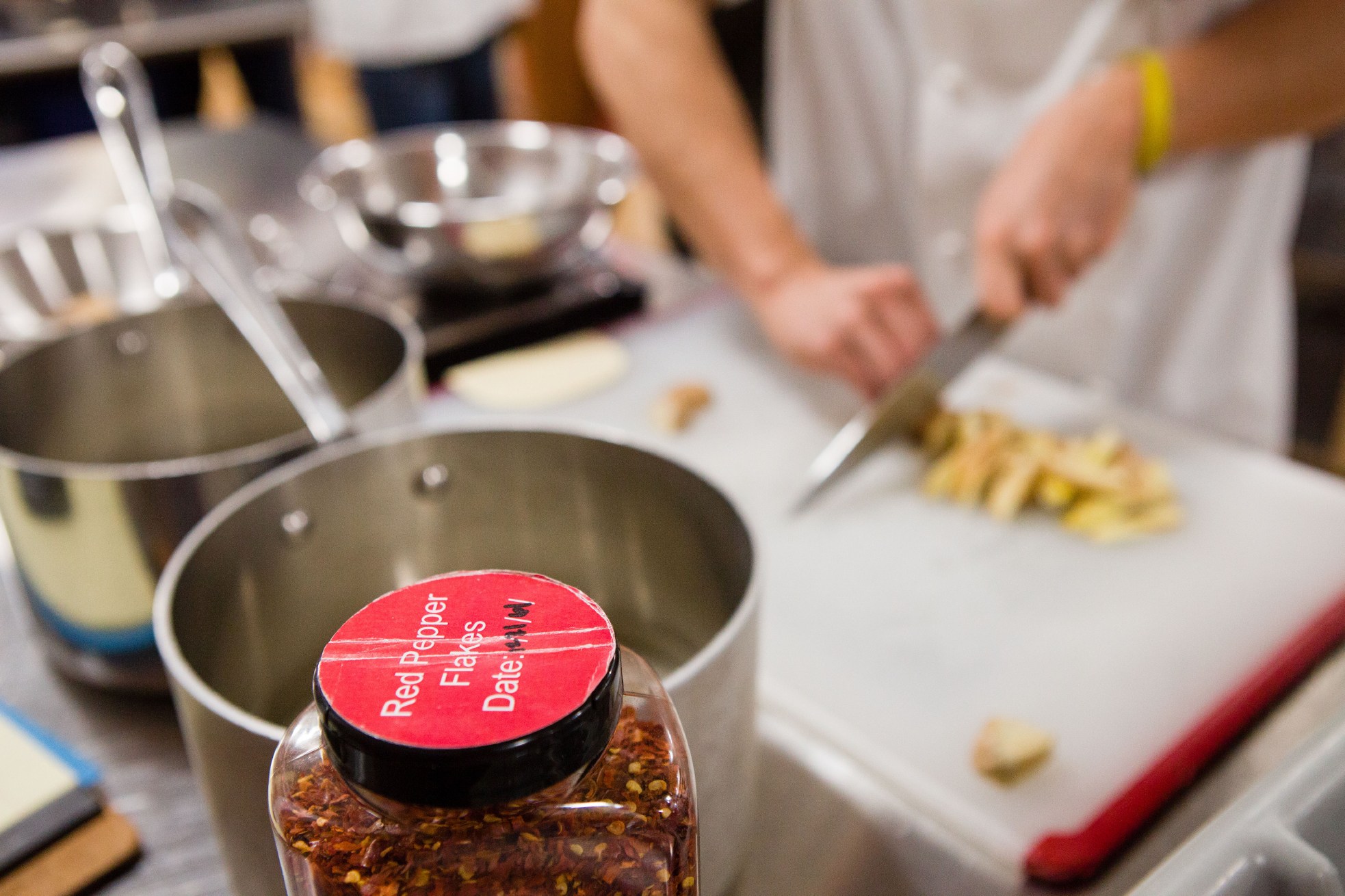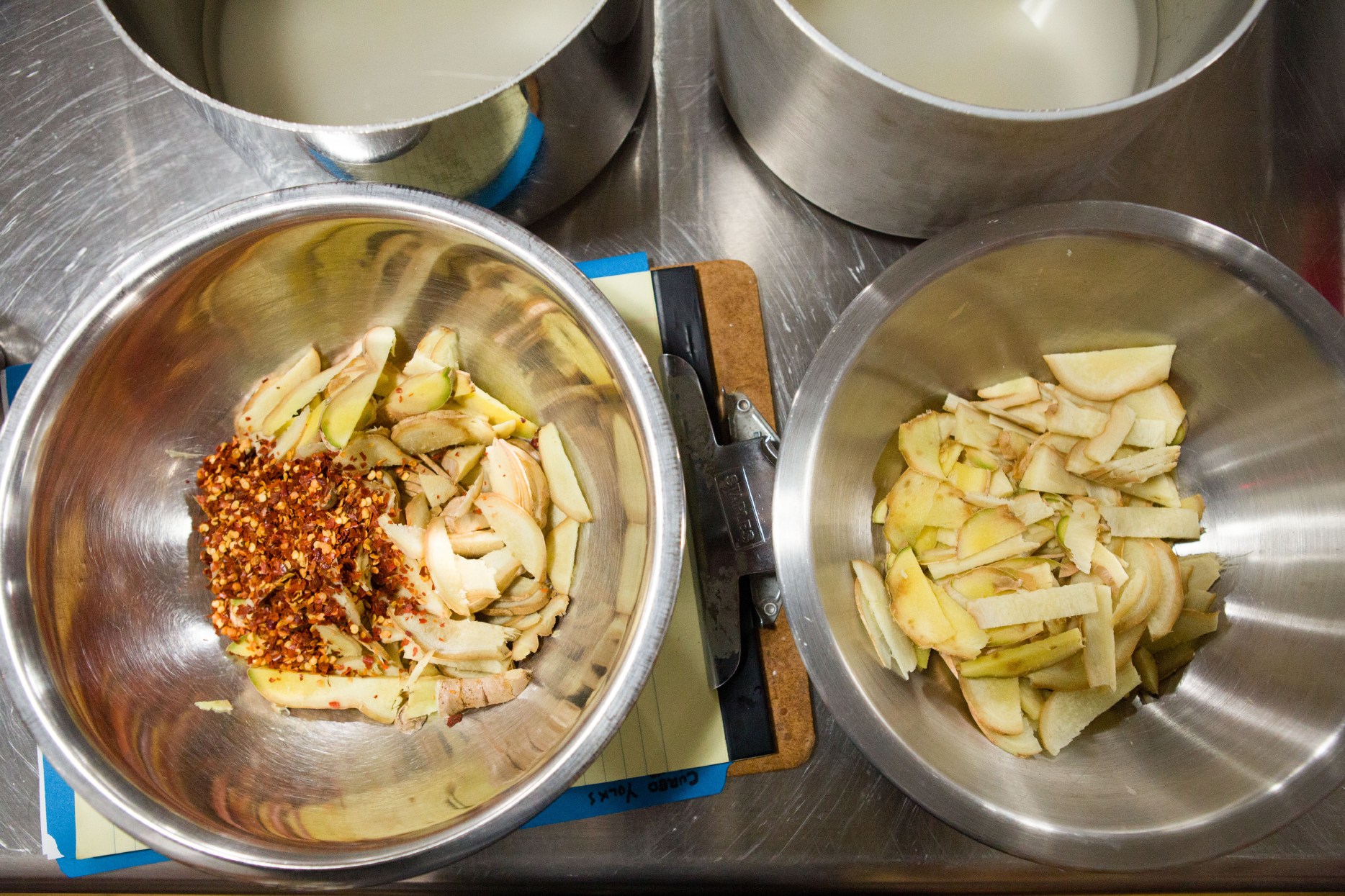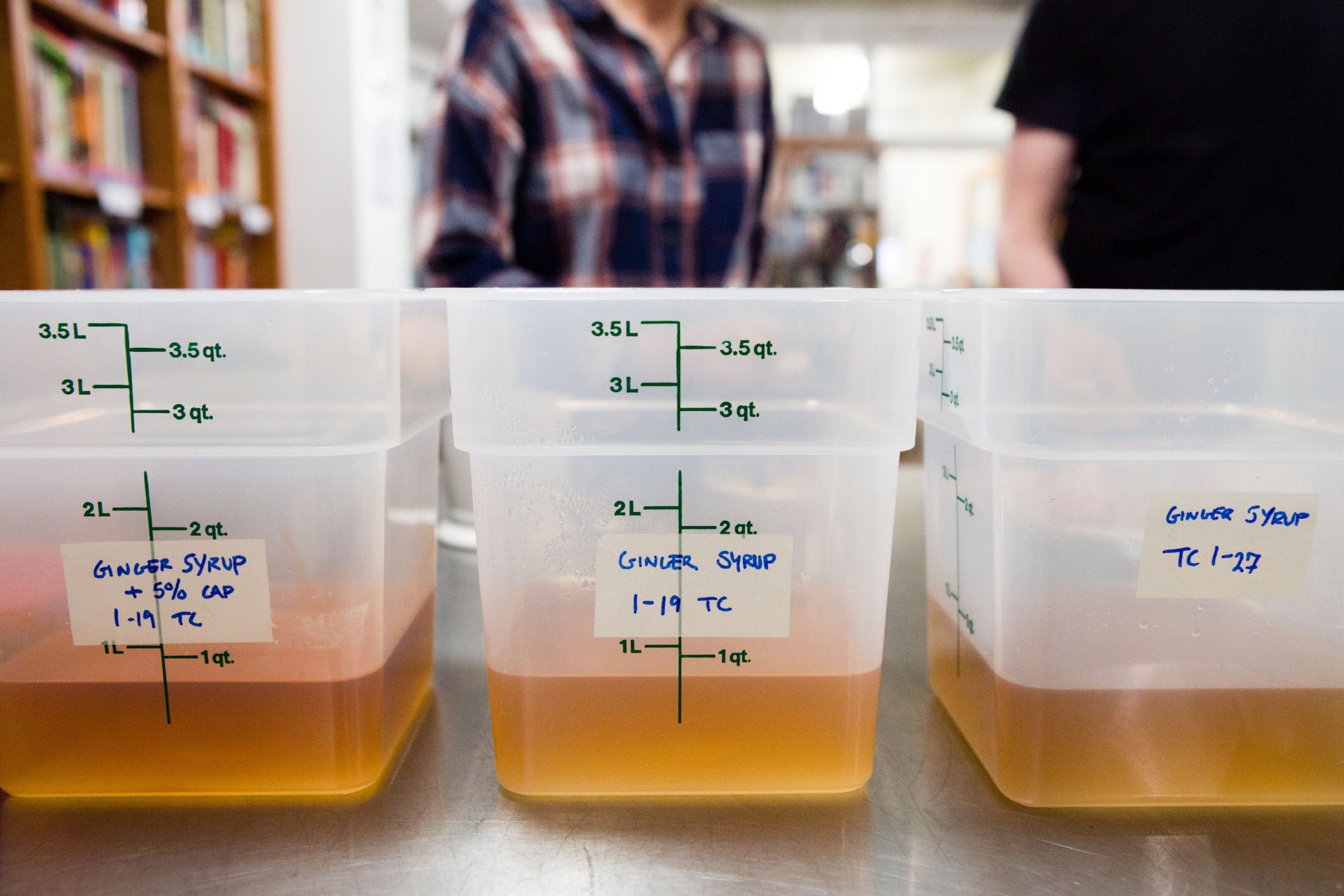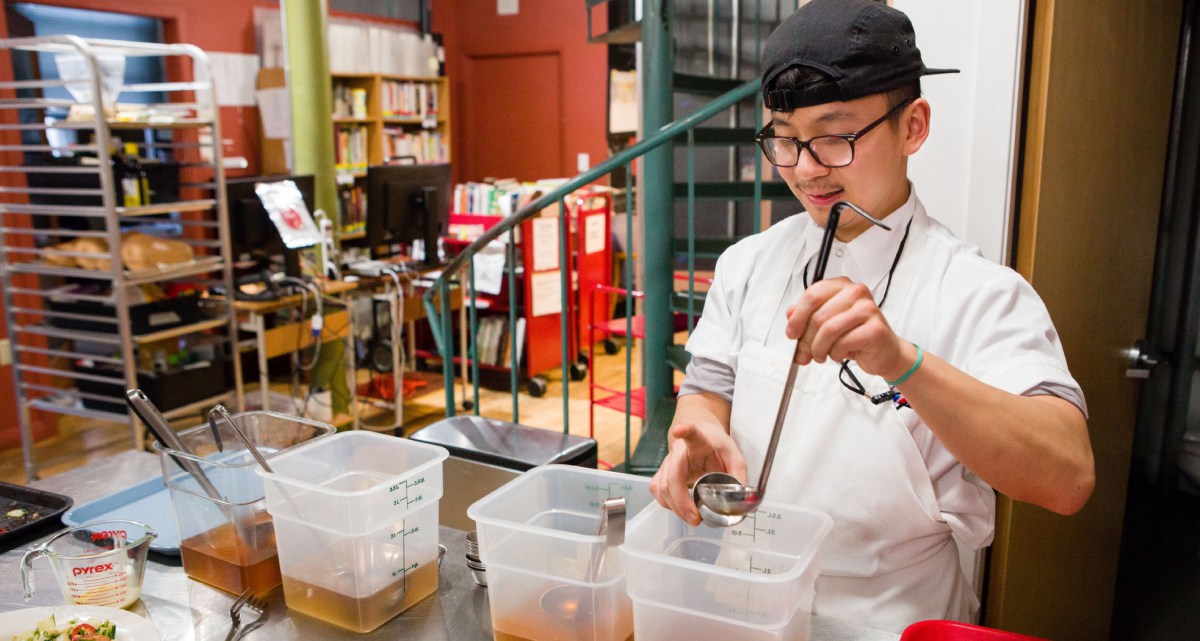One of the things we love about fresh ginger, besides its sweetly sharp fragrance, is its spicy kick. Like chile peppers, ginger contains particular molecules that cause a pleasingly pungent burn. Indeed, the compound gingerol, which gives that spicy edge to ginger, is a close chemical relative of capsaicin, which does the same in chiles.
How do gingerol and capsaicin make you feel that spicy burn? It all comes down to shape. Different molecules fit differently into receptors in our mouths and on our tongues. Like a lock and key, the taste of a spicy food depends on how well the molecules and receptors fit together. The TRPV1 receptor, first discovered in 1997, is a perfect fit with capsaicin molecules, stimulating that familiar sensation of heat and irritation that we perversely crave. The gingerol molecules from fresh ginger don’t fit quite as well. The more neatly the molecules fit into the receptor, the more powerful the sensation, which is why ginger’s burn is never as strong as a pepper’s.

There’s another important difference between gingerol and capsaicin that affects the cook as well: gingerol is much less stable. As soon as you heat fresh ginger, its gingerol starts to decompose. Each molecule splits in half. One half is zingerone, which fits very loosely into our mouth’s receptors, meaning we perceive it as much less spicy. The other half becomes an aroma molecule with a fruity, grassy odor.
This breakdown continues over time, so gingery dishes that are served shortly after cooking—say, a stir-fry—are still plenty pungent. But if a gingery delicacy is stored for a while before it’s eaten, the end result may be significantly less spicy than we might hope. This happens with ginger candy, ginger syrups and sodas, and ginger cookies. And the breakdown of gingerol happens fastest in a high-pH (basic) environment—for instance, in a cookie made with baking powder.

Interestingly, when ginger is dried, gingerol sheds a water molecule and turns into a variant called shogaol, named for shoga, the Japanese word for ginger. Shogaol sockets into our spiciness receptors better than gingerol does, so, molecule-for-molecule, it tastes about twice as spicy. But, when dried ginger is rehydrated, shogaol starts to convert back into gingerol, and when it’s cooked, it loses its fire after a few days, in the same way that fresh ginger does.
To taste this change first hand, test cook Tim Chin made a ginger syrup with 100 grams of thinly sliced fresh ginger and 250 grams each water and sugar. After it had sat for a week he made an identical batch of fresh syrup and the Cook’s Science team tasted them blind, side-by-side. The fresh syrup was lively, spicy, and sinus clearing, while the week-old batch was mild, flat, boring.

An easy way to compensate for ginger’s fleeting kick? Spike gingery food with a little chile pepper. As anyone who’s eaten leftover five-alarm chili can attest, heat and time do little to tame capsaicin. And since it stimulates the same receptors in the mouth, it gives a similar bite as fresh ginger—even months later.
Back to the ginger syrup, Tim found through further testing that adding a small amount of crushed red pepper (1 percent of the weight of the ginger in the recipe, or ½ teaspoon per 3½ ounces thinly sliced ginger) to the syrup at the same time as the ginger yielded a syrup that was pleasantly spicy a week out. Pepper flakes can vary in spiciness so taste the syrup frequently while infusing to make sure it’s not getting too spicy. For recipes calling for dried ginger, like ginger snaps, a pinch of cayenne pepper works well.
Test kitchen photography by Kevin White.
